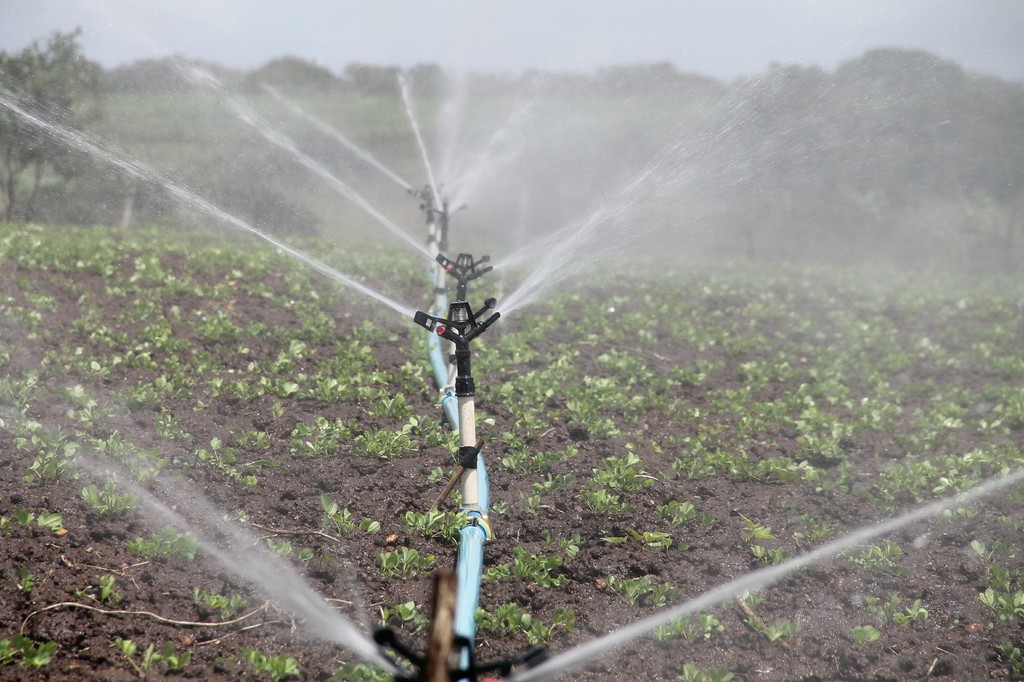Article by George Shewchuk

In a land as vast as the United States with its diverse environmental regions and a massive agriculture industry, how do we redistribute our precious water resources?
The Romans figured it out. In 312 B.C. they engineered a system of aqueducts to move water from remote sources to those areas of their land that was less bestowed by the gifts of nature.
Fast forward to 1902. This marks the beginning of a contemporary water management entity and the Bureau of Reclamation. Their mission today, as it was then, is to address the increasing water demands of the West while protecting the environment and public investment in our structures.
Through the sheer power of human endeavour, what was once arid and unfarmable land has been nourished and made productive by devising ways to move water from those regions with plenty to those with less, this time by using a massive network of canal systems.
Seepage, water lost to the subsurface, is the greatest threat to water delivery by canal.
Lost in Transmission.
Although the Bureau of Reclamation has engineered and maintained a vast network of irrigation canals for over 100 years and despite the advances made in hydrology and materials science, these canal systems are still an imperfect conduit for water transmission. As a key mandate for the Bureau of Reclamation, to deliver reliable water and power resources to the Western States, maintaining the performance of these delivery systems is a high priority task that requires a concerted ongoing effort.
Water is a slippery commodity to share. The forces of nature put continuous pressure on canal structures, degrading their capacity to move water. Over time, water is lost by surface evaporation and by the absorption of plant life. However, this sort of water loss is minimal compared to the volume of water that is drained out of the canal through seepage - water loss through the base or walls of a canal. Seepage can seriously reduce the volume of water flow intended for its destination.
Dry cornfield by Couleur; Lush cornfield by analogicus (Pixabay)
When it rains, it pours.
And then again, sometimes it doesn’t rain at all. This is the hallmark of climate change: unpredictable and extreme weather events. Droughts, floods and wildfires will become more commonplace in the near future, putting more pressure on the agricultural industry to feed the nation and maximise the yield of greenhouse and field production.
The challenge is fluid (pun intended!) and the threats to a well-managed canal system are never ending. As our population grows the demands on the agricultural industry grows and the process of water delivery requires constant attention.
Not only do we need to mitigate the effects of seepage to ensure that our precious water resources are not wasted, we need to prepare this infrastructure in time to withstand the severe weather events promised for the future that will further impact the delivery of water to our customers.
The challenge is daunting but not insurmountable.
The crux of this challenge lies at the intersection of material science, installation techniques, maintenance demands, and economic value. The best solution will be a balanced approach that addresses all of these requirements.
In a field of highly competitive solvers, you’ll need to stand out from the crowd. Go to the “edge” of the usual solution spaces and look for analogous concepts in other industry sectors, then consider how they may apply to this challenge. Novelty alone won’t bring success but in your exploration of ideas it’s always helpful to expand the range of your thinking in order to find a new way of solving an old problem.
Solvers with the best solutions will have an opportunity to take their ideas to Reclamation Labs and collaborate with their team to validate and scale their solutions. This is where your ideas get put to the test.
How an ideal solution will ensure the optimal operation of a canal system:
- Minimizes water lost through seepage
- Innovates on material science to produce durable infrastructure
- Ensures that installation is simple, and maintenance is minimal
- Cost-effective
Going with the flow.
Or even going against it! Innovation is about thinking in different ways or considering the usual suspects of a problem but with a different perspective. Crowdsourcing this challenge gives us the opportunity to reach out across the globe to tap the talents of diverse groups of potential solvers. Now is the time to put your problem-solving skills to work to find new ways to alleviate water seepage.
Jump in! Help us solve a critically important problem by sharing your ideas with HeroX and through generative collaboration with Reclamation bring them into the real world.
